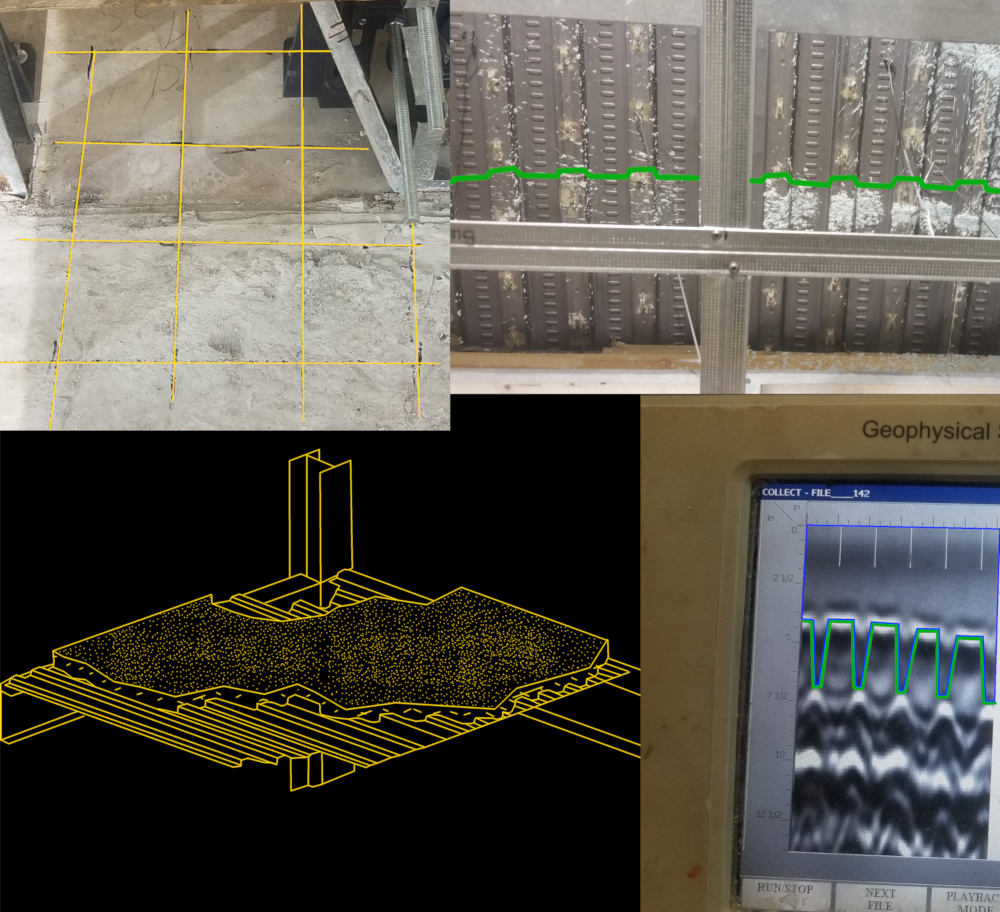
Metal Pan, Wire Mesh, and Ground Penetrating RADAR (GPR)

This article explains something we get a lot of questions about, or that customers in the past have just assumed would not work. How does GPR work with metal pan?
Typical metal pan construction is a thin layer of sheet metal with a high section and a low section, then offset just above the metal pan is a layer of reinforcing steel that is normally wire mesh. (bottom left image)
(top left, top of the slab with wire mesh pattern marked out)
(top right, the bottom of slab showing the metal pan)
A sort of worst-case scenario that people who have only a basic understanding of GPR would think, is that a metal pan floor with layers of wire mesh would be very hard, if not impossible to scan. For example, GPR reflects when it hits metal, so the signal cannot penetrate metal pan and all the wire mesh would cause interference and would make the signal extremely difficult to read.
This is not the case.
Unlike X-ray, we only need access to the top of the concrete slab. While we cannot see through metal pan, that issue is irrelevant due to the metal pan being located at the bottom of the slab. We just need to see down to it.
In the graphics above you can see the green line of the profile of the metal pan (top right). This corresponds with the green line on the screen where we can see clearly down to the metal pan and the high/low pattern of it as well (bottom right). Everything in the blue outline area is the concrete layer. This is super clear and empty, and any PT cables or power conduits present would leave very large and noticeable hyperbola.
Wire mesh, like any metal, will reflect our signal. This is not an issue because it is thin and can be filtered almost completely out. The scan screen shown is from a spot with an overlap of wire mesh but with the proper filters applied we can get a clean image of the area we are inspecting.
Because of the metal pan, everything below the green line is irrelevant because it is just the “ringing effect” of the signal reflecting off the metal pan. This happens when the metal acts like a radio antenna and rebroadcast the signal.
In cases were metal pan is not used we can see all the objects connected to the bottom of the slab that are not embedded within. This can be walls or runs of conduits or junction boxes, and we will mark them out as being under the slab without ever having to go below.
All these items are clearly visible from the floor below and can be inspected visually if access to the floor below is available. If requested these can be added to the report if metal pan is present.
Metal Pan with wire mesh is no problem for an experienced operator with the right equipment. We have done thousands of scans on this type of slab and have no problem guaranteeing our work.
